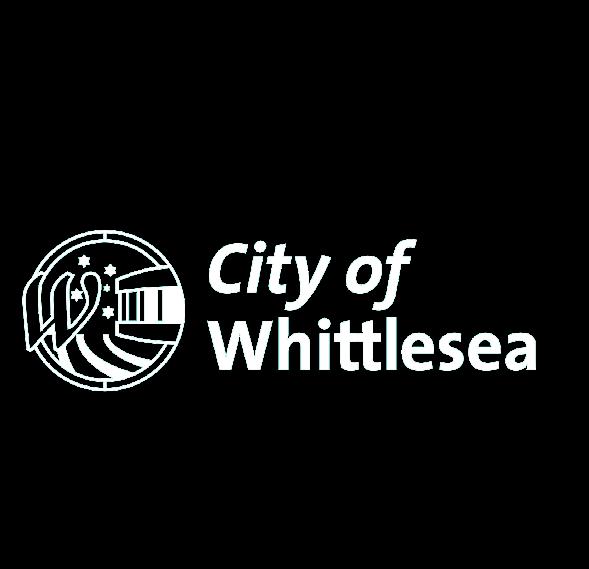

Aging in Place: Mernda North 2023-2028 Anita Ye 912820
1: Photo from City of Melbourne, 2020. (Retrieved 20 October frp, https://www.melbourne.vic.gov.au/SiteCollectionDocuments/melbourne-great-place-age.pdf). Copyright statement City of Melbourne. An Aging Strategy for 55+ Strategic
Figure
Plan
Acknowledgement of Country
This report acknowledges and recognises the traditional custodians of the land on which we reside, the Wurundjeri People of the Kulin Nation whose lands were never ceded. The City of Whittlesea is situated on the grounds of the Wurundjeri Willum Clan, who have inhabited their Country for 60,000 years. Always was, always will be Aboriginal Land.

Executive Summary
The Need for an Ageing Strategy
Map of Current Infrastructure
Demographics
Vision and Goals
Alignment with Other Strategies
Community Engagement Strategy
Actions
Goal 1
Goal 2
Goal 3
Goal 4
Goal 5
Monitoring and Evaluation Plan
References
Total Count: 3204
Contents
Figure 2 Photo from Council Magazine, 2022. (Retrieved 20 October from https://councilmagazine.com.au/be-brave-make-change-national-reconciliationweek-across-the-country/). Copyright Whittlesea City Council p3 p4 p5 p6 p7 p8 p9 p10 p11 p12 p12 p13 p14 p15
Figure 3
Photo from City of Whittlesea, 2016. (Retrieved 20 October from, https://www.whittlesea.vic.gov.au/media/3491/positive-ageing-strategy-201625.pdf). Copyright statement City of Whittlesea.

Executive Summary
Ageing in Place in Mernda North 20232028 will ensure that Mernda North will be a great place to age for all. The plan sets out five strategic goals to ensure positive ageing in the suburb: aligned with international standards laid out by the World Health Organisation and state legislation. Maintaining a happy and healthy lifestyle is critical to ensure a smooth transition into one’s later years, and it is important that older adults remain engaged, respected and safe in Mernda North. Ageing in Place in Mernda North builds upon the previous Positive Ageing Strategy of promoting social equity and social interconnectedness throughout the community and adds an additional domain of environmental sustainability to mitigate environmentally driven health risks and promote a greater quality of life.
3
The Need For An Ageing Strategy
According to the WHO, 1 in 6 people worldwide will be 60 years and over by 2030 (2020). Owed to the advent of modern medicine, improvements to nutrition, sanitation practices and lifestyle changes: people are living longer than ever (Kirkwood, 2017). Mernda North is home to a large working-aged population, with the 35-39 age group comprising the largest majority (11.5%). Within 20 years, there will be a significant number of working-aged residents who have transitioned into old age, requiring an ageing strategy to facilitate a seamless transition into the retirement years. Within Mernda*, it is estimated that people over the age of 55 will comprise of 40.5% of the population growth by 2041 (Forecast.id, 2022).
What is Ageing in Place?
Ageing in place is a term which features heavily in contemporary strategic plans, referring to the ability to remain autonomous in one’s home and within the community for as long as possible (Wiles et al., 2012). Whilst the concept of ageing is often immediately associated with the aged care sector, the ABS found that the overwhelming majority (95.3%) of older people (over the age of 65) lived in households. Therefore, a successful ageing strategy needs to encompass accessibility within the neighbourhood through all sectors as our needs and mobility evolve throughout older age. Applying age-friendly considerations to cities benefits not only the elderly but also the mobility impaired and children (Pérez-del Hoyo et al., 2016).
Council’s Commitment To Positive Ageing
• Council has signed the AgeFriendly Victoria Declaration.
• In 2022, Council has committed to the EveryAGE Counts Campaign to end ageism.
• Whilst the WHO Age Friendly Cities framework informs the Positive Aging Strategy 2016-2025, Council has not been included in the Global Network yet. 10/31 Metropolitan Melbourne councils are a part of the network (WHO, 2022).
By making cities and communities age-friendly, we ensure that cities and communities are inclusive and equitable places that leave no one behind.” World Health Organisation. 2018

INTRODUCTION
data
for the ABS suburbs
localities classification.
*Forecast. id does not offer population growth data for Mernda North, an ABS SA2 classification. The only
available for Whittlesea City Council is
and
Figure 4
4
Photo taken by Anita Ye, 2022
Current Facilities

retrieved from https://www.data.vic.gov.au/
Desktop analysis conducted via GIS and through databases such as ‘My Community Directory’ and the Whittlesea online directory revealed very few senior clubs throughout the suburb. Furthermore, it was found that there are no non-English speaking clubs within the suburb. Residents in the retirement village do live within a 500-metre vicinity of the Mernda Village Drive Town Centre, but live well outside an 800-metre catchment for the train station.
5 AGING IN PLACE IN MERNDA NORTH CITY OF WHITTLESEA
Figure 5
Map made by Anita Ye, 2022. GIS Data
55+ Community
Mernda North
11,427 Residents





Approx 17% of residents are over 55







61.9% of people 55-64 yro are still in the labour force

Over 55’s are overrepresented in all health issues with the exception of asthma and lung disease. Cases in 55+ 558/758 376/552


Diabetes Cancer

The top 5 countries of birth outside Australia are: Italy, India, England, Greece and North Macedonia



All statistics retrieved from ABS Community Profile Data 2021 unless otherwise stated
All cases of Dementia present in those aged 6585+
Older people constitute 23.7% of the total population identifying with a Mental Health Condition

58/67



There is more than double the amount of women with a Mental Health Condition compared to men.
F:139 M: 65
12.9% of males and 25.7% of females live in lone households.


54.1% of people that cannot speak English well are between the ages of 55-85+. People of Indian origin dominate the population composition in the 2544yro group (18.7%), which does not translate in the 55+ group (3.2%).
39.2% of all over 55+ are born overseas

Of the 1018 residents that stated they provided assistance to those with a disability or old age, 29.6% of people comprised of over 55 yro.

9.9% of older people volunteered 25.1% of people that volunteer are over 55.
Compared to Greater Melbourne, in which approximately 1 in 4 people are over the age of 55, Mernda North has a smaller older population (ABS, 2021). The large working-aged population will transition into this age demographic within the next 20 years.
85+ 84-80 79-75 74-70 69-65 64-60 59-55 0.4% 0.9% 1.9% 3% 2.9% 2.9% 3.3% 0.5% 1.4% 1.9% 3.8% 3.2% 4% 4.1% F
Y o ungAge:
W o r kingAge: 25-54 O l derAdults:55 + 4,134 5,328 1,948
M
0-24
59/69 Arthritis
Kidney
152/217
Disease Stroke
33/33
Need for Assistance 55-64 65-74 75-84 85+ 10.4% 13.8% 22.9% 62%
6 AGING IN PLACE IN MERNDA NORTH CITY OF WHITTLESEA
Vision
Mernda North will be a great place to age for all.
Mernda North will be safe and welcoming for older people to age in place. Older people will be able to live in comfort and safety, with ample access to wellbeing services, engage within their communities, be received with respect and maintain an active and healthy lifestyle in Mernda North.
Goals
Goal 1

Access To Health And Support Services.
Older people are able to access support for their physical and mental health as they age. Older adults will receive readily available resources that allow them to Age in Place successfully to the greatest degree of comfort.

Goal 2

Valued and Engaged
Every older person is received with respect and dignity. They will be valued for their contributions to society and welcomed with open arms by their community. Everyone will be able to have a voice, regardless of linguistic barriers.
Goal 3

Feeling Safe
Goal 4

Breathing Green
Goal 5


Older people feel safe and confident navigating Mernda North independently. Within the home, they are free from abuse and violence.
The lives of older people are supplemented by a Mernda North that values sustainability. Their livelihoods will be improved by efforts to mitigate urban heat island and the outdoor environment is protected to ensure a greater quality of life.
Older people are able to keep their bodies and minds dextrous through physical activity and enriched digital skills.
Healthy
Healthy Body
Mind
7 AGING IN PLACE IN MERNDA NORTH CITY OF WHITTLESEA
6.
taken by Anita Ye, 2022.
Figure
Photo
Alignment with Other Strategies
Ageing in Place in Mernda North builds upon the principles already laid out by the Positive Ageing Strategy 2016-2025. Both plans are heavily underpinned by the international standard for designing age-friendly cities, defined by the WHO Age Friendly Cities Framework.
Ageing in Place in Mernda North is horizontally aligned with the current municipal strategic plan:
Whittlesea a Place for All 2040 (WAPFA) and other strategic plans focused on equity and the prevention of violence. However, the Positive Ageing Strategy was written premature to the implementation of WAPFA and presents a notable deficit in the goal of fulfilling a sustainable environment. In order to support successful ageing in place in Mernda North, climate change and its associated effects must be addressed in order to ensure the fulfilment of a liveable environment.
WHO Age Friendly Cities Framework
Ageing well in Victoria 20222026
Friendly Victoria Declaration
Who Measuring The Age-Friendliness Of Cities: A Guide To Using Core Indicators
Counts Declaration
Ageing in Place in Mernda North
Lifelong Strategy Plan
Whittlesea 2020-2040
8 AGING IN PLACE IN MERNDA NORTH CITY OF WHITTLESEA INTEGRATED FRAMEWORK
INTERNATIONAL
STATE
EveryAGE
LOCAL (DIRECT) A
Positive Ageing Strategy
Municipal
Community
LOCAL (INDIRECT) Family
Greening
Climate Ready
Age
Place for All 2040
2016-2025
Engagement Strategy
Violence Strategy
Whittlesea
Community Engagement Strategy
It is essential that whilst this plan defines what constitutes an ‘older person’ as 55 and older, older people are not a heterogenous group. There is diversity in background, interests and needs. For example, within Mernda North, 61.9% of people in the 55–64 age group are still participating in the labour force with considerable autonomy. The needs and expectations of this age group may differ significantly from those over 85 years old, and who are starting to require greater assistance (60.1% need assistance).
With respect to the diverse abilities of older adults within Mernda North, using a multitude of engagement methods can increase the opportunities for more people to participate in the consultation stage. It is essential to utilise the full spectrum of online and face-to-face engagement tools to maximise the reach of the community engagement process to ensure that every voice is accommodated. Furthermore, the multiculturalism of Mernda North will be embraced by ensuring that community engagement sessions will be delivered in various languages.
METHOD Description
Focus Groups
Interviews
Online Survey
Engage Whittlesea Portal
Pop Up Events
Peer Facilitator
Mail Surveys
Council uses the universally acclaimed International Association of Public Participation (IAP2) framework to engage, as outlined in the Community Engagement Policy. The existing Positive Ageing Strategy utilised surveys, focus groups and conversations in the community engagement phase, which identified the core concerns for ageing within the municipality. Loneliness, isolation, health issues, loss of autonomy and mobility issues were at the forefront of older people’s concerns.
Residents will be informed via:
• Online notices
• Emails
• Newspaper advertising
• Flyers
Precedents

• Notices at community venues Council has previously engaged Chatterbox Projects for Whittlesea 2040. They specialise in tactile pop up events to engage the community.
A small to medium group of people designed to permit discussion about a set topic.
Participants are interviewed by a facilitator based on semistructured interviews.
An electronic link is emailed to participants which can be completed in a short timeframe.
Community members can give feedback on strategic plans via the Engage Whittlesea Portal.
Strategically located in hotspots such as shopping and community centres, using tactile methods such as sticky notes and whiteboards for free-flowing discussion.
Uses a trained facilitator within the age bracket and community to lead discussion with the group.
Willing participants can be mailed a survey to complete. This method can be useful to reach the people without internet or technological assess.
Have your say @ https://engage.whittlesea.vic.gov.au/shapewhittlesea

The City of Maroondah used peer facilitators, named as ‘Age Friendly Champions’ as a part of their ageing strategy and found that older people felt more comfortable voicing their concerns (City of Maroondah, 2015).

9 AGING IN PLACE IN MERNDA NORTH CITY OF WHITTLESEA
THE NEED TO ENGAGE Methods
Goal 1: Health and Support
The onset of declining physical health is inevitable as we age. Within Mernda North, people over the age of 55 are overwhelmingly overrepresented in chronic health conditions, except asthma and lung diseases (ABS, 2021). The COVID-19 pandemic and the ensuing Royal Commission into Aged Care Quality and Safety (Australian Government, 2020) served as a harrowing reality check into the chronic underfunding, understaffing and malpractice within the aged care sector. It has been estimated that 65,000 workers are leaving the industry per year due to poor working conditions, overworking and low pay throughout the industry (CEDA, 2022).
Loneliness and social isolation are one of the biggest concerns consistently raised by older adults, as noted by Council’s Positive Ageing Strategy 2016-2025 (CoW, 2016) and universally recognised throughout the literature (ShiovitzEzra et al., 2018). Loneliness has been directly correlated with declining physical health, mental illness and poor nutrition (Crewdson, 2016). Physical limitations typically constrain older people with the highest risk of loneliness, live alone, are widowed, financially unstable and experience deficits of regular social interaction with family and friends (Savikko et al. 2005). It is also important to acknowledge that there is a degree of ‘self-stigmatisation’ within the older adult population that manifests in a hesitancy to discuss mental health issues, as opposed to physical ailments, which may result in an underreporting of cases (Tzouvara et al., 2017; Thomas and Shute, 2006).
ACTION
Continue to advocate for pathways into the Aged Care industry through the Victorian Government Free Tafe Initiative.
Continue to provide support via the Commonwealth Home Support Program for those who require in-home support to maximise time spent living at home independently. 1.1 1.2 1.3
Establish an elder outreach psychological service to help older adults experiencing mental ailments such as social isolation and loneliness.
10 AGING IN PLACE IN MERNDA NORTH CITY OF WHITTLESEA
ACTIONS
Goal 2: Valued and Engaged
Ageism is defined as the negative stereotyping and discrimination of people based on their age (Burnes et al., 2019). According to the Australian Human Rights Commission (2014), 35% of Australians aged 55-64 have experienced ageism. The ‘EveryAGE Counts’ advocacy organisation reports that the most common forms of ageism occur through discriminatory hiring practices, prejudicial attitudes and undermining of elderly voices and opinions (2022). The proliferation of subconscious and conscious ageist attitudes greatly contributes to the decline of health and mental well-being in older adults (Shiovitz-Ezra et al., 2018; Burnes et al., 2019). Social isolation is further compounded by the inability to speak the local language, which severely diminishes people’s ability to participate in civic matters and have a voice within the community (Hossen, 2012). In Mernda North, older people comprise 54.1% of those who can speak little to no English, putting them at risk for alienation within the community. It is important to continue engaging with older people from all walks of life, culture and ability.
ACTION
2.1
Volunteering in the community
Older people participating in volunteering activities has been proven to hold significant mental and physical benefits. According to Onyx and Warburton (2003), volunteering produces opportunities for greater social interaction outside of the family in addition to facilitating for routine and a more active lifestyle.
2.4
Initiate opportunities for intergenerational connection outside family and friend circles through the means of community events to encourage interaction throughout the community.
Create volunteering opportunities within the community through local events, partners and businesses.
Continue to uphold the declaration to EveryAGE Counts by hosting forums and campaigns at local venues and schools to educate the community about ageism.
11 AGING IN PLACE IN MERNDA NORTH CITY OF WHITTLESEA
culturally diverse community
the
meeting groups.
2.2 2.3 Empower CALD communities by providing collateral in various languages, translator services,
engagement sessions and support
development of neighbourhood
ACTIONS
Goal 3: Safety
As stated in the WHO Guide to Using Core Indicators (2015), when older people feel safe within their environments, they can continue enriching their experience within the community. The concept of feeling safe comprises several elements, including but not limited to: walkability, neighbourhood design, accessibility and within the home (WHO, 2015). According to Dow et al. (2020), elder abuse is often stigmatised due to the fact that it is often perpetrated by the individual’s family members. Therefore it is important to destigmatise the feelings of shame felt by older individuals and make help readily available when needed.
ACTION
Continue to raise awareness of elder abuse by strengthening the actions raised within the City of Whittlesea Family Violence Strategy. 3.1 3.2 3.3
Establish an accessible app to report inaccessible areas and identify safety gaps within the neighbourhood.
Advocate for footpath, public space and public transport upgrades within Mernda North in unsafe and inaccessible areas.
Goal 4: Breathe Green
As we witness the devastating consequences of climate change unfolding, with soaring global temperatures, intensifying frequencies of natural disasters and threats to biodiversity, climate resilience should be a priority when creating age-friendly cities (Butler, 2018). The urban heat island effect and heat stress have been directly correlated as a fatal risk to elderly people (Herrmann & Sauerborn, 2018; Varquez et al., 2020), being cited as a ‘silent killer’ that has claimed more lives than any other natural disaster (Climate Council Australia, 2016). Collective efforts through using non-heat absorbent building materials and green infrastructure and intensifying tree canopy can significantly impact on urban heat (Shahmohamadi et al., 2010). Cultivating a sustainable environment has also been correlated with reducing physical and mental health conditions in older adults (Sugiyama and Thompson, 2007).
ACTION
Encourage and inform residents of sustainable solutions to retrofit homes through Solar Victoria and Energy Victoria to improve thermal comfort and extreme weather events as outlined in the Climate Ready Whittlesea Plan.
Support residents subject to extreme weather events to stay safe in these circumstances. 4.1 4.2 4.3
Continue to commit to the Greening Whittlesea City Forest Strategy 2020-2040 by planting more trees to combat heat stress.
12 AGING IN PLACE IN MERNDA NORTH CITY OF WHITTLESEA
ACTIONS
Goal 5: Active Mind, Active Body
Maintaining healthy cognitive and physical function is highly beneficial in old age to prevent the onset of dementia, cardiovascular diseases, arthritis, diabetes, obesity and depression (Livingston et al., 2020; Sugiyama & Thompson, 2007). Access to social exercise groups is also a productive way to increase opportunities for social interaction. The Senior’s Playground, a type of public exercise infrastructure widely used in Asia, has been slowly introduced in Australia, with notable benefits in improving mobility and encouraging socialisation (Volkanovski & Marshall, 2015).
ACTION
Digital Literacy
In the wake of our digital age, the risk of social isolation has been further exacerbated by digital illiteracy, especially following the ongoing COVID-19 pandemic (Xie et al., 2020). It is, therefore important to continue supporting those not confident in accessing digital technologies to reduce alienation.
Provide access to free digital literacy programs for older adults, which can be received in person or online.
Encourage usage of health and wellness programs and facilities to maintain regular physical activity into older age. Discounted/free access to health and wellness programs
Create an easily accessible online portal accessible through the City of Whittlesea webpage, which outlines available activities, and support services for older people.
Implement Senior playgrounds in parks and open spaces.
13 AGING IN PLACE IN MERNDA NORTH CITY OF WHITTLESEA ACTIONS
%
5.1 5.2 5.3
5.4
Monitoring and Evaluation
Monitoring indicators
The development of indicators to measure progress has been developed by referencing the WHO Guide to Using Core Indicators (2015) and the literature from Lowe et al. (2015, p. 137). It is important to note that due to the nature of this strategy, subjective indicators may be more effective than objective indicators to monitor progress.
Outcomes Indicators
Physical and Mental Health
Administrative data, reported statistics, intake numbers, self reporting
Safety at Home Surveys, data collected by law enforcement
Neighbourhood Safety
Community Involvement
Age-related Care
Sustainability
Field surveys, surveys from residents
Aggregating volunteer data, membership statistics, surveys
Comparing the availability of services against the need for services, audits
Administrative data, satisfaction surveys
ROLE OF COUNCIL
Advocate: Council will advocate to higher government authorities to deliver funding for services.
Facilitate: Council will work with the community to deliver desired services.
Provide: Council will provide services for the community.
STAKEHOLDERS
Government
Whittlesea City Council (WCC)
Jobs Victoria (JV)
Victorian State Government (VSG) DEWLP
Emergency Services (ES)
Educational TAFE
University for the Third Age (U3A) Registered Training Organisations (RTO)
Community/Private Neighbourhood Houses (NH) Advocacy groups (AG) Community groups (CG)
Volunteering Organisations (VO) Aged Care Providers (ACP)

Long: 4-5 years
Ongoing:
AGING IN PLACE IN MERNDA NORTH AGING IN PLACE IN MERNDA NORTH Implementation
Action Type 1.1 IMPLEMENTATION Responsibility Timeframe Monitoring Cycle 1.2 1.3 2.1 2.2 2.3 2.4 3.1 3.2 3.3 4.1 4.2 4.3 5.1 5.2 5.3 5.4 A, F P A, P JV, VSG, TAFE, RTO WCC, AG VSG, WCC, ACP S S S Annual Annual Annual P P F, P F, P WCC, NH, CG WCC, NH, CG, VV WCC, AG, CG WCC S S S S Annual Annual Annual Bi-annually Constant Annual Monthly S O S WCC, AG WCC, DEWLP WCC, AG, CG P A A, F A, F P P WCC, VSG WCC WCC, ES L O S S S S L Annual Annual Whenever needed WCC, VO, U3A, TAFE WCC WCC WCC, VSG, DEWLP A, F, P P P A, P Bi-annually Monthly Constant Annually Goal 1: Health and Support Goal 2: Respected and Engaged Goal 3: Safety Goal 4: Breathe Green Goal 5: Healthy Mind Healthy Body
Plan
A F
P
Time
L O
be implemented easily, mostly applied to services which can be provided by Council.
frames S
Short: 1-3 years Can
May require continual advocacy to state
local governments due to funding deficits.
and
Photo
Copyright
Continual Ongoing efforts that require large scale change. Figure 7.
from City of Boorondara, 2020. (Retrieved 20 October from, https://www.boroondara.vic.gov.au/media/48591/download?inline=).
statement City of Boorondara.
References
Burnes, D., Sheppard, C., Henderson, C. R., Wassel, M., Cope, R., Barber, C., & Pillemer, K. (2019). Interventions to Reduce Ageism Against Older Adults: A Systematic Review and Meta-Analysis. American Journal of Public Health, 109(8), e1–e9. https://doi.org/10.2105/AJPH.2019.305123
Butler, C. D. (2018). Climate Change, Health and Existential Risks to Civilization: A Comprehensive Review (1989–2013). International Journal of Environmental Research and Public Health, 15(10), 2266. https:// doi.org/10.3390/ijerph15102266
Crewdson, J. A. (2016). The effect of loneliness in the elderly population: a review. Healthy aging and clinical care in the elderly, 8(1). https://doi.org/10.4137/HACCE.S35890
Dow, B., Gahan, L., Gaffy, E., Joosten, M., Vrantsidis, F., & Jarred, M. (2020). Barriers to Disclosing Elder Abuse and Taking Action in Australia. Journal of Family Violence, 35(8), 853–861. https://doi.org/10.1007/ s10896-019-00084-w
Herrmann, A., & Sauerborn, R. (2018). General Practitioners’ Perceptions of Heat Health Impacts on the Elderly in the Face of Climate Change—A Qualitative Study in Baden-Württemberg, Germany. International Journal of Environmental Research and Public Health, 15(5), Article 5. https://doi.org/10.3390/ ijerph15050843
Hossen, A. (2012). Social Isolation and Loneliness among Elderly Immigrants: The Case of South Asian Elderly Living in Canada. Journal of International Social Issues, 1 (1), 1-10. https://www.winona.edu/socialwork/ media/hossen_2012.pdf
Kirkwood, T. B. L. (2017). Why and how are we living longer? Experimental Physiology, 102(9), 1067–1074. https://doi.org/10.1113/EP086205
Livingston, G., Huntley, J., Sommerlad, A., Ames, D., Ballard, C., Banerjee, S., Brayne, C., Burns, A., CohenMansfield, J., Cooper, C., Costafreda, S. G., Dias, A., Fox, N., Gitlin, L. N., Howard, R., Kales, H. C., Kivimäki, M., Larson, E. B., Ogunniyi, A., … Mukadam, N. (2020). Dementia prevention, intervention, and care: 2020 report of the Lancet Commission. The Lancet, 396(10248), 413–446. https://doi.org/10.1016/ S0140-6736(20)30367-6
Lowe, M., Whitzman, C., Badland, H., Davern, M., Aye, L., Hes, D., Butterworth, I., & Giles-Corti, B. (2015). Planning Healthy, Liveable and Sustainable Cities: How Can Indicators Inform Policy? Urban Policy and Research, 33(2), 131–144. https://doi.org/10.1080/08111146.2014.1002606
Lowen, T., Davern, M. T., Mavoa, S., & Brasher, K. (2015). Age-friendly cities and communities: Access to services for older people. Australian Planner, 52(4), 255–265. https://doi.org/10.1080/07293682.2015.1 047874
Mavoa, S., Davern, M., Breed, M., & Hahs, A. (2019). Higher levels of greenness and biodiversity associate with greater subjective wellbeing in adults living in Melbourne, Australia. Health & Place, 57, 321–329. https://doi.org/10.1016/j.healthplace.2019.05.006
Onyx, J., & Warburton, J. (2003). Volunteering and health among older people: A review. Australasian Journal on Ageing, 22(2), 65–69. https://doi.org/10.1111/j.1741-6612.2003.tb00468.x Pérez-delHoyo, R., García-Mayor, C., Mora-Mora, H., Gilart-Iglesias, V., & Andújar-Montoya, M. D. (2016). Making smart and accessible cities: An urban model based on the design of intelligent environments. 2016 5th International Conference on Smart Cities and Green ICT Systems (SMARTGREENS), 1–8. https://www.researchgate.net/publication/301622059_Making_Smart_and_Accessible_Cities_-_An_ Urban_Model_based_on_the_Design_of_Intelligent_Environments
15 AGING IN PLACE IN MERNDA NORTH CITY OF WHITTLESEA
Savikko, N., Routasalo, P., Tilvis, R. S., Strandberg, T. E., & Pitkälä, K. H. (2005). Predictors and subjective causes of loneliness in an aged population. Archives of Gerontology and Geriatrics, 41(3), 223–233. https://doi. org/10.1016/j.archger.2005.03.002
Shahmohamadi, P. Che-Ani, A. I., Ramly, A., Maulud, K. N. A. & Mohd-Nor, M., F., I. (2010). Reducing heat island effects: a systematic review to achieve energy consumption balance. International Journal of Physical Sciences, 5(6), 626-636. https://academicjournals.org/journal/IJPS/article-full-text-pdf/ DBB8AC426195
Shiovitz-Ezra, S., Shemesh, J., & McDonnell/Naughton, M. (2018). Pathways from Ageism to Loneliness. In L. Ayalon & C. Tesch-Römer (Eds.), Contemporary Perspectives on Ageism (pp. 131–147). Springer International Publishing. https://doi.org/10.1007/978-3-319-73820-8_9
Sugiyama, T., & Thompson, C. W. (2007). Outdoor Environments, Activity and the Well-Being of Older People: Conceptualising Environmental Support. Environment and Planning A: Economy and Space, 39(8), 1943–1960. https://doi.org/10.1068/a38226
Thomas, K., & Shute, R. (2006). The old and mentally ill in Australia: Doubly stigmatised. Australian Psychologist, 41(3), 186–192. https://doi.org/10.1080/00050060600726312
Tzouvara, V., Papadopoulos, C., & Randhawa, G. (2018). Self-Stigma Experiences Among Older Adults with Mental Health Problems Residing in Long-Term Care Facilities: A Qualitative Study. Issues in Mental Health Nursing, 39(5), 403–410. https://doi.org/10.1080/01612840.2017.1383540
Varquez, A. C. G., Darmanto, N. S., Honda, Y., Ihara, T., & Kanda, M. (2020). Future increase in elderly heatrelated mortality of a rapidly growing Asian megacity. Scientific Reports, 10(1), Article 1. https://doi. org/10.1038/s41598-020-66288-z
Volkanovski, J. & Marshall, N. (2015, February). Seniors playgrounds may never get old. State of Australian Cities Conference [Conference]. Gold Coast.
Wiles, J. L., Leibing, A., Guberman, N., Reeve, J., & Allen, R. E. S. (2012). The Meaning of “Aging in Place” to Older People. The Gerontologist, 52(3), 357–366. https://doi.org/10.1093/geront/gnr098
Xie, B., Charness, N., Fingerman, K., Kaye, J., Kim, M. T., & Khurshid, A. (2020). When Going Digital Becomes a Necessity: Ensuring Older Adults’ Needs for Information, Services, and Social Inclusion During COVID-19. Journal of Aging & Social Policy, 32(4–5), 460–470. https://doi.org/10.1080/08959420.2020 .1771237
Grey Literature
Australian Bureau of Statistics. (2021). Community Profile: Mernda North 2021. https://abs.gov.au/census/findcensus-data/community-profiles/2021/209041531
Australian Government. (2020). Royal Commission into Aged Care Quality and Safety. Aged care and COVID-19: a special report. https://agedcare.royalcommission.gov.au/sites/default/files/2020-10/agedcare-and-covid-19-a-special-report.pdf
Australian Human Rights Commission. (2014). Face the facts: older Australians. https://humanrights.gov.au/ourwork/education/face-facts-older-australians#fn7
16 AGING IN PLACE IN MERNDA NORTH CITY OF WHITTLESEA
Continued
City of Whittlesea. (2013). Whittlesea Lifelong learning strategy and action plan 2013-2016. https://www. whittlesea.vic.gov.au/about-us/news-publications/plans-strategies-and-policies/lifelong-learningstrategy-and-action-plan/
City of Whittlesea. (2016). Positive Ageing Strategy 2016-2025. https://www.whittlesea.vic.gov.au/ media/3491/positive-ageing-strategy-201625.pdf
City of Whittlesea. (2017). Climate Ready Whittlesea. https://www.whittlesea.vic.gov.au/media/3491/positiveageing-strategy-201625.pdf
City of Whittlesea. (2020). Whittlesea A Place for All 2040. https://www.whittlesea.vic.gov.au/whittlesea2040
City of Whittlesea. (2020). Greening Greater Whittlesea 2020-2040. https://www.whittlesea.vic.gov.au/aboutus/news-publications/plans-strategies-and-policies/greening-whittlesea-city-forest-strategy-20202040/#:~:text=In%20April%202021%2C%20Council%20adopted,liveable%20neighbourhoods%20 and%20connected%20communities.
City of Whittlesea. (2021). A Voice for all- community engagement policy 2021. https://www.whittlesea.vic.gov. au/about-us/news-publications/plans-strategies-and-policies/a-voice-for-all-community-engagementpolicy-2021/
Climate Council Australia. (2016). The silent killer: climate change and the health impacts of extreme heat. https://www.climatecouncil.org.au/uploads/b6cd8665c633434e8d02910eee3ca87c.pdf
Committee for Economic Development of Australia (CEDA). (2022). Duty of care: aged care sector in crisis. https://www.ceda.com.au/getmedia/a7bc2f9e-4999-4c6b-9795-0eff89f0b94b/Duty-of-Care-AgedCare-Sector-in-Crisis.pdf
EveryAGE Counts. (2021). About the EveryAGE Counts Campaign. https://d3n8a8pro7vhmx.cloudfront. net/benevolent/pages/383/attachments/original/1551153845/Backgrounder_-_EveryAGE_ Counts___03102018.pdf?1551153845
Forecast.id. (2022). Mernda Population and Age Structure. https://forecast.id.com.au/whittlesea/populationage-structure?WebID=130
Knaus, C. (2022, September 24). Grim milestone as Australia’s aged care homes mark 4,000 Covid deaths.
The Guardian https://www.theguardian.com/australia-news/2022/sep/24/grim-milestone-asaustralias-aged-care-homes-mark-4000-covid-deaths
Victorian State Government. (2022). Ageing well in Victoria https://content.vic.gov.au/sites/default/ files/2022-06/Ageing%20well%20in%20Victoria.pdf
Victorian State Government. (2017). Active & healthy ageing Local government action guide October 2017 https://www.health.vic.gov.au/sites/default/files/migrated/files/collections/policies-and-guidelines/a/ active-and-healthy-ageing-local-govt-action-guide---pdf.pdf
World Health Organisation. (n.d). The WHO age friendly cities framework. https://extranet.who.int/ agefriendlyworld/age-friendly-cities-framework/ World Health Organisation. (2020). Ageing. https://www.who.int/health-topics/ageing#tab=tab_1 World Health Organisation. (2018). The Global network for age friendly cities and communities. https:// extranet.who.int/agefriendlyworld/age-friendly-cities-framework/
World Health Organisation. (2015). Measuring the age friendliness of cities: a guide to using core indicators. http://apps.who.int/iris/bitstream/handle/10665/203830/9789241509695_eng.pdf?sequence=1
17 AGING IN PLACE IN MERNDA NORTH CITY OF WHITTLESEA
Continued

































